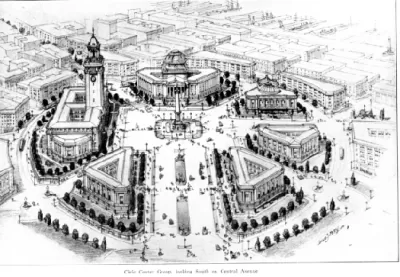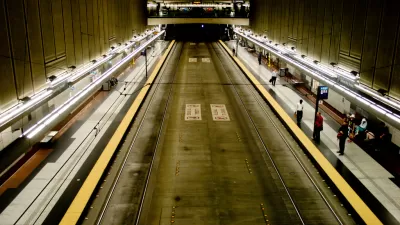Virgil Bogue's 1911 Plan of Seattle called for a centrally-planned metropolis with efficient transit, parks, and a cap on building height. It was voted down, but remains an interesting study on planning for the long term.

Seattle grew by leaps and bounds from the 1870s through the early 20th century. Expecting future expansion, engineer Virgil Bogue developed a comprehensive plan to accommodate over a million people. The ambitious project failed to garner enough support, but in today's transit-friendly climate it's an interesting piece of 20th-century planning that pays little attention to cars.
The 1911 plan's street layout has a European feel. "Downtown buildings are capped in height, much like Paris, so as to let light into downtown streets. Mercer Island is one big park, restricted from development. And city government offices are condensed in a grand civic center across Denny Way from where Seattle Center now sits."
The New York Subway got its start in 1904 (and Boston's in 1897), so it's not inconceivable to imagine a Seattle line. Bogue wrote, "The city's growth will be retarded with a tendency to develop congested, undesirable and unhealthful districts unless rapid transit facilities are provided."
Bogue's proposed mass transit seems like a missed opportunity these days. However, as historian Leonard Garfield puts it, "what we take from the Bogue plan is that ideas that are too grandiose won't have the support of the people."
FULL STORY: What would Seattle be like today if the 'Bogue' plan passed in 1912?

Alabama: Trump Terminates Settlements for Black Communities Harmed By Raw Sewage
Trump deemed the landmark civil rights agreement “illegal DEI and environmental justice policy.”

Planetizen Federal Action Tracker
A weekly monitor of how Trump’s orders and actions are impacting planners and planning in America.

Why Should We Subsidize Public Transportation?
Many public transit agencies face financial stress due to rising costs, declining fare revenue, and declining subsidies. Transit advocates must provide a strong business case for increasing public transit funding.

Understanding Road Diets
An explainer from Momentum highlights the advantages of reducing vehicle lanes in favor of more bike, transit, and pedestrian infrastructure.

New California Law Regulates Warehouse Pollution
A new law tightens building and emissions regulations for large distribution warehouses to mitigate air pollution and traffic in surrounding communities.

Phoenix Announces Opening Date for Light Rail Extension
The South Central extension will connect South Phoenix to downtown and other major hubs starting on June 7.
Urban Design for Planners 1: Software Tools
This six-course series explores essential urban design concepts using open source software and equips planners with the tools they need to participate fully in the urban design process.
Planning for Universal Design
Learn the tools for implementing Universal Design in planning regulations.
Caltrans
Smith Gee Studio
Institute for Housing and Urban Development Studies (IHS)
City of Grandview
Harvard GSD Executive Education
Toledo-Lucas County Plan Commissions
Salt Lake City
NYU Wagner Graduate School of Public Service





























